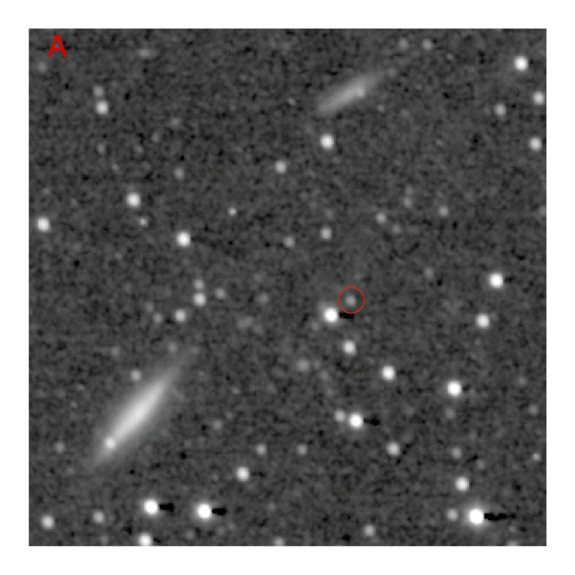NASA’s New Horizons spacecraft captured this image of the dwarf planet Quaoar in July 2016, from a distance of 1.3 billion miles (2.1 billion kilometers).
NASA’s New Horizons spacecraft has photographed a distant dwarf planet cruising through the dark depths of the outer solar system.
New Horizons captured images of the mysterious, 690-mile-wide (1,110 kilometers) Quaoar at four different times on July 13 and July 14 — exactly one year after the probe’s historic July 14, 2015, flyby of Pluto .
New Horizons was 1.3 billion miles (2.1 billion km) from Quaoar when it took the photos with its Long Range Reconnaissance Imager (LORRI) camera, so the dwarf planet is not sharply resolved. But even such fuzzy views have scientific value, NASA officials said. [Destination Pluto: NASA’s New Horizons Mission in Pictures ]
“With the oblique view available from New Horizons, LORRI sees only a portion of Quaoar’s illuminated surface, which is very different from the nearly fully illuminated view of the dwarf planet from Earth,” NASA officials wrote in an image description today (Aug. 31). “Comparing Quaoar from the two very different perspectives gives mission scientists a valuable opportunity to study the light-scattering properties of Quaoar’s surface.”
Quaoar, which was discovered in 2002, has not officially been designated a dwarf planet but almost certainly qualifies, researchers have said. Dwarf planets need to be massive enough to be shaped into a sphere by their own gravity; with a diameter of 690 miles, Quaoar is larger than the officially recognized dwarf planet Ceres.
Quaoar lies an average of 43 astronomical units (AU) from the sun and completes one lap around the star every 286 Earth years. (One AU is the average distance from Earth to the sun — about 93 million miles, or 150 million km.) The object has one known moon.

NASA’s New Horizons probe captured these images of the dwarf planet Quaoar on July 13-14, 2016, from a distance of 1.3 billion miles (2.1 billion kilometers).
Credit: NASA/JHUAPL/SwRI
The newly released images also show a number of background stars and two galaxies, known as IC 1048 and UGC 09485, both of which are about 370 billion times farther from New Horizons than Quaoar is, agency officials added.
As the Quaoar observations show, New Horizons’ work did not end with the Pluto encounter. On Jan. 1, 2019, the probe will fly by an object called 2014 MU69, which lies about 1 billion miles (1.6 billion km) beyond Pluto.
The 2014 MU69 flyby, which is the centerpiece of a mission extension approved by NASA last month, should help researchers better understand the diversity of objects in the Kuiper Belt, the large, frigid realm beyond Neptune’s orbit. (At an estimated 13 to 25 miles, or 21 to 40 km, wide, 2014 MU69 is very different from Pluto, which measures 1,473 miles, or 2,370 km, across.)
Follow Mike Wall on Twitter @michaeldwall and Google+ . Follow us @Spacedotcom , Facebook or Google+ . Originally published on Space.com .
Comments are closed.